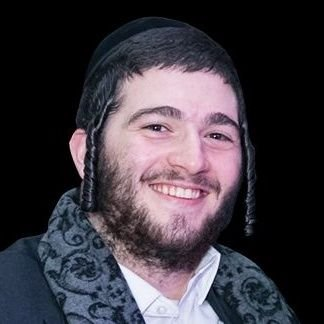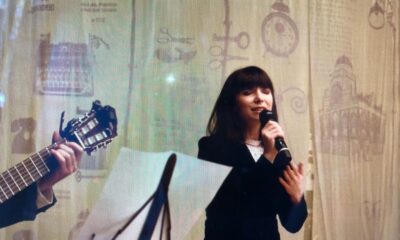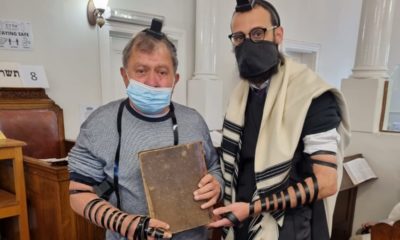
World

Yiddish journalist gets to grips with SA
Yiddish is a burgeoning language, according to New York Yiddish-language journalist Ari Weiser, who is visiting South Africa this week.
“It is a language that is thriving and growing, not dying at all,” this 29-year-old native-language Yiddish speaker told the SA Jewish Report in Johannesburg.
Weiser is in South Africa to write stories for the Pesach edition of Moment Yiddish Weekly magazine, the largest print Yiddish magazine, with more than 200 000 readers around the world. His aim in travelling here and to other parts of the world is to expose Moment Yiddish Weekly’s readership to different parts of the globe.
“For Sukkot and Pesach, we have more advertising and more space for content, so every year, we visit a different country,” said Weiser, “I’ve been to Ukraine, to Russia, to South Korea, to interesting places. Sometimes it’s a war zone, sometimes it’s just an interesting place, like South Korea was, and we visited the border with North Korea. South Africa was just on the list, and we got to it.”
For the last special edition of Moment Yiddish Weekly, he visited South Korea, and wrote articles in Yiddish about the impossibility of escaping North Korea and the weird laws that existed in that country.
Moment Yiddish Weekly is distributed throughout New York, New Jersey, Canada, the United Kingdom, Belgium, and Israel.
Yiddish has about 600 000 native speakers, many of whom live in New York. The historical language of Ashkenazi Jews, Yiddish experienced significant changes in the number of speakers over the past century. Before World War II, there were about 11 million to 13 million Yiddish speakers worldwide, but the Holocaust caused a devastating decline, as 85% of the six million Jews murdered were Yiddish speakers. The language has since been kept alive by ultra-Orthodox Jewish communities in the United States and Israel.
Yiddish is Weiser’s first language, as he grew up in a Haredi community in New York, which has the largest population of speakers. He learned to speak, read, and write Yiddish from his parents and community. “It’s the language I grew up with,” he said. “My father, my mother, my family, and everyone in my community. I grew up with Yiddish.”
Weiser said he intended to visit a country in the Middle East, but the situation there made it unsafe, so he decided to visit South Africa. “South Africa is a beautiful place and has a beautiful Jewish community, so we wanted to visit,” he said.
During his visit, Weiser visited Soweto and spent a Shabbat with the Johannesburg Jewish community, followed by a visit to the Pilanesberg. He said he wanted South Africa to be brought to the readership of Moment Yiddish Weekly magazine, so they would be able to experience all the country had to offer.
“Not everyone has the money or time to travel more than 15 hours to South Africa, so through this trip, I was able to show people what the country is like,” said Weiser.
Weiser also writes for and edits Yiddishe Vinkel, the largest and most popular Yiddish news platform. He writes about anything and everything, with the focus on what is happening in the world today. Yiddishe Vinkel serves as a resource for the Jewish community, offering a wide range of content including articles, news, images, videos, and interviews. In addition to articles covering the politics and news of the day, it provides weekly newsletters and pamphlets on Torah topics, including discussions of the weekly Torah portion, halacha (Jewish law), and hashkafa (Jewish philosophy)
Another publication that Weiser writes for is Der Yid, the oldest, most widely circulated Yiddish newspaper in the Orthodox community. Founded in 1953, it had a circulation of about 55 000 as of 2019, and is widely read within the broader Yiddish-speaking Haredi community.
Weiser said he wrote about many subjects, with a particular focus on current events. “I do news, interviews about news, as well as some journalism about different places.”
Weiser travelled to California to cover the devastating wildfires and interview people for Yiddish speakers like himself. Similarly, he has interviewed politicians like United States House of Representatives Speaker Mike Johnson, where they touched on the war in Ukraine, Hamas, antisemitism, and the hostages. He also interviewed an organisation in America that assists Jewish prisoners, and recently wrote a story about the near impossibility of escaping North Korea.
Weiser grew up with a love for writing, and was always writing about anything and everything he could, so when he was looking for a career, it seemed like a “no-brainer” to write for Yiddish publications. He has since been kept extremely busy contributing stories that Yiddish speakers can access in the language they feel most comfortable with.










